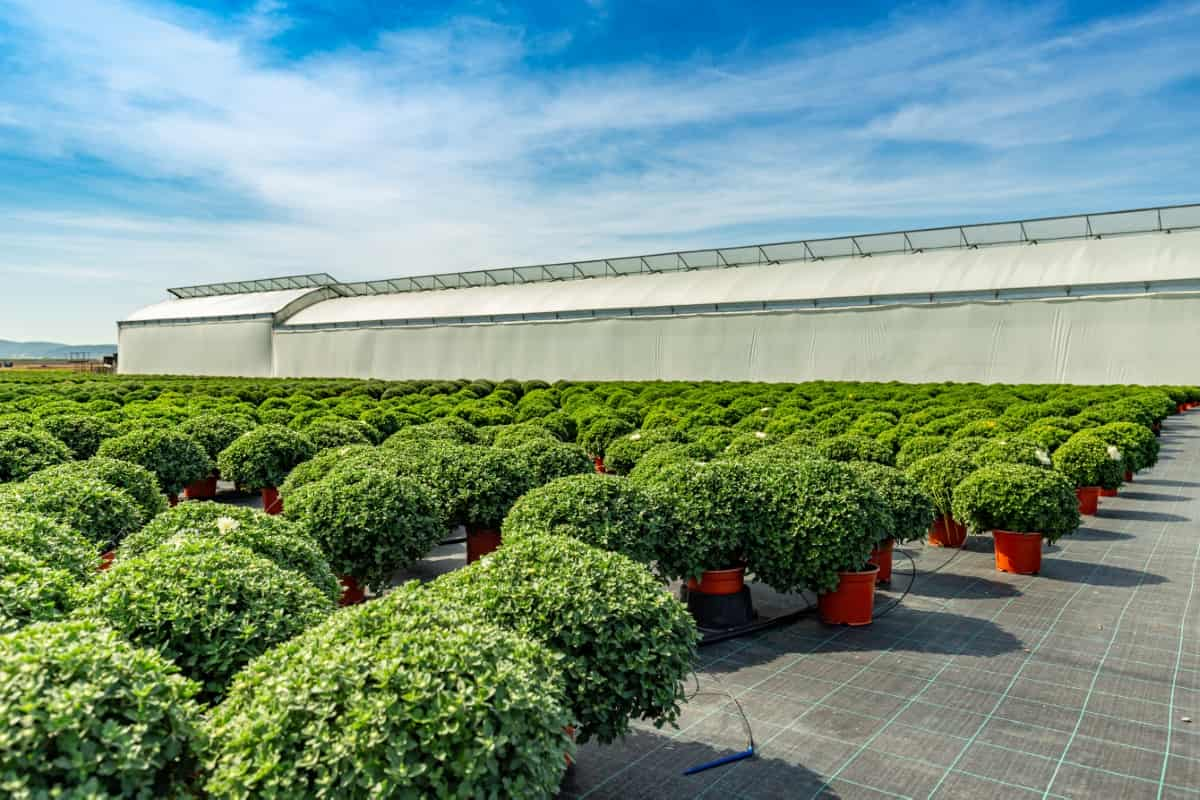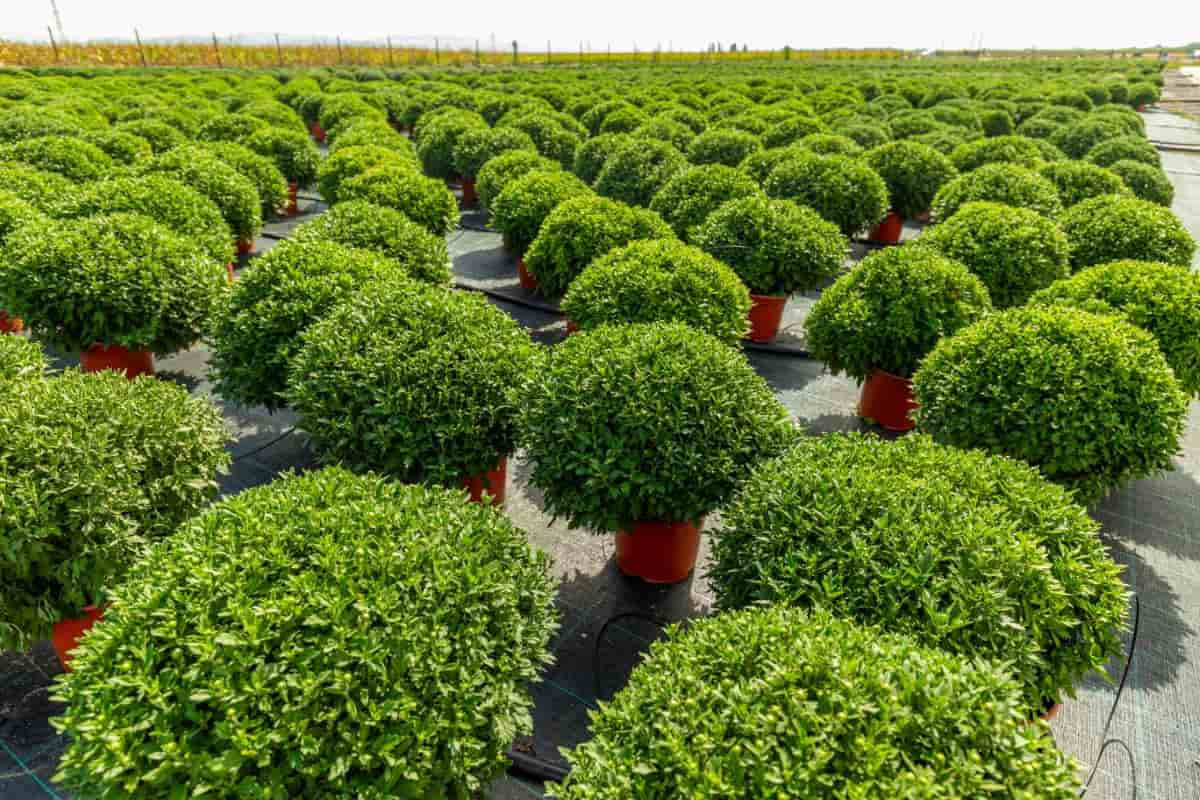Chrysanthemums, commonly called mums, are popular flowers that many homeowners and garden enthusiasts cherish for their vibrant blooms. However, it’s not uncommon for one to wonder, “Why are my potted mums not blooming?” or to notice symptoms such as chrysanthemum buds not opening. This might lead to questions about bringing potted mums back to life. As mums turn brown, learning how to trim dead mums becomes vital. This article will explore why your mums might not bloom and offer remedies to address those issues.

Why are My Potted Mums Not Blooming
Lack of Sufficient Sunlight: Understanding the Importance of Light for Potted Mums’ Blooming
Mums require adequate sunlight to bloom properly. A decrease in light exposure can affect the blooming process significantly. When mums don’t receive sufficient sunlight, their growth can be stunted, and the formation of buds might be compromised. Ideally, potted mums need a minimum of 6 hours of direct sunlight each day. It’s crucial to ensure they are near a bright window if they are indoors.
Improper Watering Techniques: How Overwatering or Underwatering Can Affect Mums’ Flowering
One of the common reasons why mums fail to bloom is due to improper watering. Excessive watering can lead to root rot and unhealthy plants, while insufficient watering can cause dehydration. It’s important to maintain a balanced watering schedule. The soil should be moist but not waterlogged. If the mums turn brown, it might indicate excessive watering. Ensuring proper pot drainage is crucial to avoid root rot and other water-related problems.
Nutrient Deficiencies: Identifying and Addressing the Lack of Essential Nutrients for Blooming Mums
Nutrient deficiency can adversely affect the blooming of mums. For robust flowering, mums require an adequate supply of essential nutrients. If the mums are not blooming or the buds are not opening, it might indicate nutrient deficiencies. Regularly feeding your mums with a balanced fertilizer can address this issue and promote healthy blooming.
Inadequate Soil Conditions: Examining the Role of Soil Quality in Mums’ Flower Production
If the soil is not well-draining or lacks essential nutrients, it can inhibit flower production. Ensuring a good-quality potting mix with a balanced pH and essential nutrients can make a significant difference. It’s also vital to ensure the soil remains aerated and does not become too compacted, hindering root growth.
In case you missed it: How to Make Mums Bloom Faster: Tips, Techniques, and Ideas

Insufficient Fertilization: Understanding the Significance of Proper Feeding for Blooming Mums
Just like other flowering plants, mums need adequate fertilization to bloom. Insufficient fertilization can lead to weak plants that fail to produce flowers. Regularly feeding mums with a balanced fertilizer, especially during their growth phase, can boost their ability to produce vibrant flowers. However, it’s essential to ensure you don’t over-fertilize, leading to nutrient burn.
Pest Infestations: Recognizing and Managing Common Pests That Hamper Mums’ Blooming
Pests can be a major hindrance to mums’ blooming. Common pests like aphids, spider mites, and whiteflies can affect the health of mums, leading to poor blooming. Regularly inspecting the mums and adopting organic pest control measures can help manage these pests and ensure the plants remain healthy and bloom efficiently.
Disease Outbreaks: Exploring the Impact of Fungal or Bacterial Infections on Mums’ Flowering
Mums are susceptible to various diseases, including fungal and bacterial infections, which can impede their blooming ability. Early identification and treatment of these diseases are crucial. Signs like yellowing leaves or black spots can indicate disease presence. Adopting proper care practices, including not overwatering and ensuring good air circulation, can prevent the onset of these diseases.
Improper Pruning Practices: How Incorrect Trimming Can Affect Mums’ Ability to Bloom
Pruning is essential for mums, but improper practices can affect their blooming. If you’re wondering how to trim dead mums, ensuring that you’re not cutting away healthy buds or stems is crucial. Proper pruning encourages new growth and removes dead or diseased parts, ensuring the plant has all the resources it needs to bloom.
Influence of Temperature, Humidity, and Air Circulation on Mums’ Flower Production
The environment in which mums grow plays a significant role in their blooming. Temperature fluctuations, improper humidity levels, or lack of air circulation can affect their ability to produce flowers. Mums prefer cooler temperatures for blooming. Ensuring they are not exposed to extreme temperature variations, maintaining proper humidity levels, and ensuring good air circulation can promote healthy flowering.
In case you missed it: How to Plant and Care for Chrysanthemums: Outdoor Growing Instructions

Home Remedies and How to Fix the Blooming Issue With Mums
There are various home remedies to address the issue of mums not blooming. Regularly checking the soil’s moisture and ensuring proper watering, placing them in a bright spot, and using natural fertilizers like compost or worm castings can boost their health. If the chrysanthemum buds are not opening, it might be helpful to relocate the plant to a cooler spot or increase humidity levels. Regularly pruning dead or diseased parts and ensuring the plants are not crowded can also help.
Adopting a Consistent Care Routine: The Need for Regular Attention and Maintenance for Mums
For mums to flourish and bloom consistently, they require a set care routine. More is needed to provide them with their needs sporadically. Setting a schedule for watering, fertilizing, and other essential care steps ensures that they receive consistent attention. By sticking to a regular care routine, you’re promoting their overall health and helping them adjust and predict their environment, which aids in consistent blooming.
Proper Pot Selection: The Role of Container Size and Material in Mums’ Growth
The choice of pot plays an unexpectedly significant role in the health and blooming of potted mums. Too small containers can restrict root growth and limit the plant’s access to essential nutrients and moisture. On the other hand, a pot that’s too large might lead to water retention and root rot. Moreover, the material of the pot can influence temperature and moisture levels. Opting for pots that provide good drainage and are the right size for your mums can lead to healthier plants and improved blooming.
Understanding Seasonal Cycles: The Importance of Recognizing Mums’ Dormant and Active Phases
Mums, like many plants, go through seasonal cycles. Sometimes they’re in an active growth phase, and others when they enter dormancy. Recognizing these cycles is crucial. During their dormant phase, they might not produce as many blooms, which is natural. It doesn’t necessarily indicate a problem with the plant. By understanding and respecting these cycles, gardeners can adjust their care routines accordingly, ensuring they don’t overwater or overfertilize during dormancy and provide the right care during active growth.
In case you missed it: How to Make Chrysanthemums Bushy: Best Homemade Fertilizers, Composting, and Pruning Tips

Conclusion
Understanding the various factors affecting mums’ blooming and addressing them timely can ensure vibrant and healthy flowers. Regular care, combined with understanding their needs, can help bring potted mums back to life and enjoy their splendid blooms.
- Feed Your Flock for Less: Top 10 Tips to Save on Chicken Feed
- Ultimate Guide to Ossabaw Island Hog: Breeding, Raising, Diet, and Care
- Hatching Answers: The Top 10 Reasons Your Chickens Aren’t Laying Eggs
- Eggs and Economics: Breaking Down the Cost of Raising Backyard Chickens
- Defend Your Greens: Proven Methods to Keep Iguanas Out of Your Garden
- Ultimate Guide to Cinnamon Queen Chicken: A Comprehensive Guide for Beginners
- Ultimate Guide to California Tan Chicken: Breeding, Raising, Diet, Egg-Production and Care
- Ultimate Guide to Marsh Daisy Chicken: Breeding, Raising, Diet, and Care
- 10 Types of Chicken Farming Businesses You Can Start for Profits